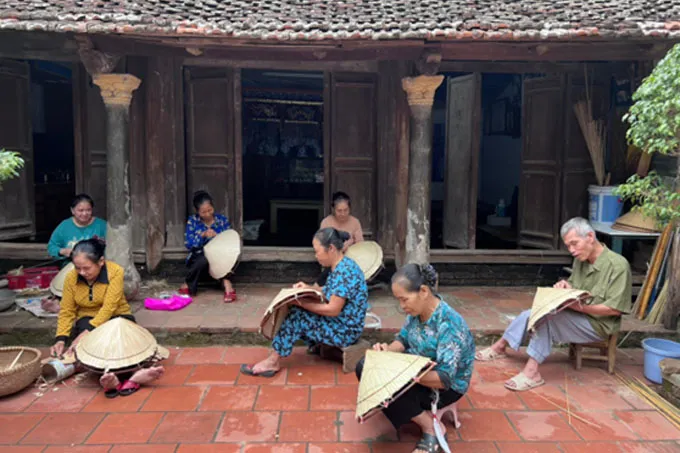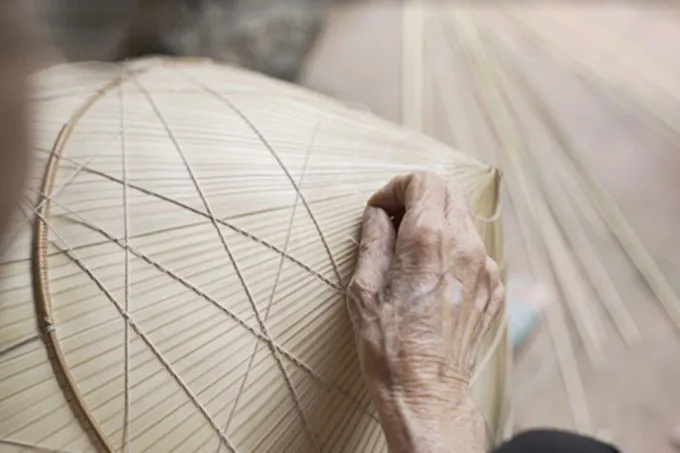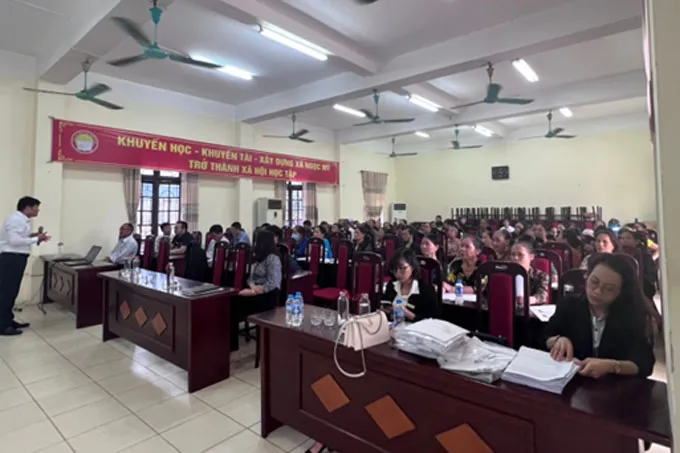Nestled in the bustling heart of Hanoi, Phu Tuc village resembles a living museum, preserving and developing the traditional conical hat making craft for hundreds of years. Visiting Phu Tuc, tourists not only admire the exquisite conical hats but also have the opportunity to discover a unique cultural beauty imbued with the soul of rural Vietnam. This journey to explore the craft village will take you back in time, learning about the history, the elaborate crafting process, and the cultural values hidden behind each simple conical hat.
The History of Phu Tuc Conical Hat Village: Imprints of Time
The origin of the conical hat making craft in Phu Tuc remains unrecorded by any precise documents to this day. However, according to the elders in the village, this craft appeared a very long time ago, perhaps from the time of their ancestors who reclaimed land and established hamlets. Legend has it that the Phu Tuc conical hat making craft may have been taught by a talented princess who brought the hat making technique from the royal court to spread among the villagers. This story, though mythical, partly reflects the respect and gratitude of the Phu Tuc people for their ancestral craft.
Through historical ups and downs, the Phu Tuc conical hat making craft has always been maintained and developed. From the initial simple and rustic conical hats, Phu Tuc artisans have constantly innovated and improved to create increasingly sophisticated and beautiful products. Phu Tuc conical hats are not only familiar items for shielding from rain and sun but have also become a cultural symbol, a meaningful souvenir, imbued with the soul of rural Vietnam.
Phu Tuc Conical Hat Making Process: The Quintessence of Handcraft
Creating a complete Phu Tuc conical hat requires artisans to go through many meticulous and elaborate stages, demanding dexterity and patience. From selecting leaves, processing leaves, making the hat frame to layering leaves, sewing hats, and finishing products, each stage contains the dedication and experience of the artisan.
1. Selecting and Processing Leaves:
The main material for making Phu Tuc conical hats is palm leaves. The palm leaves chosen must be of the right maturity, neither too young nor too old, with a milky green color and moderate thickness. After being harvested, the palm leaves are dried in the sun, then flattened with hot steam or an iron. This step helps the leaves become soft, easy to layer, and creates a beautiful gloss for the hat.
2. Making the Hat Frame:
The hat frame is made of bamboo or nứa (a type of bamboo), split into small, round, and even strips. The bamboo strips are bent into concentric circles, forming a solid frame for the hat. The number of circles and the size of each circle will determine the style and size of the hat.
3. Layering and Sewing the Hat:
This is the most important stage, requiring high skill and meticulousness. The artisan will layer palm leaves on the hat frame, adding a thin layer of bamboo sheath to increase the thickness and stiffness of the hat. Then, using a needle and special thread, they sew the layers of leaves firmly onto the hat frame. The stitching must be even, firm, and aesthetically pleasing, creating the delicate beauty of the hat.
4. Finishing the Hat:
After sewing, the excess leaves are trimmed, the brim is hemmed, and decorative details such as patterns, drawings, or colored threads are added. The top of the hat is covered with a layer of fabric or bamboo sheath to cover the leaf ends and create accents for the hat.

Each Phu Tuc conical hat is the result of a meticulous manual labor process, going through many stages and embodying the dedication of the artisan. Therefore, Phu Tuc conical hats are not only material products but also works of art, imbued with traditional cultural values.
Cultural and Tourism Values of Phu Tuc Conical Hat Village
Phu Tuc conical hats are not only familiar items in the daily life of Vietnamese people but also carry deep cultural values. The conical hat is associated with the image of gentle and graceful Vietnamese women, a symbol of simple and elegant beauty. Conical hats also appear in many cultural activities, traditional festivals, in poetry, music, and painting, becoming an indispensable part of Vietnamese culture.
Today, Phu Tuc conical hat village not only plays a role in economic production but has also become an attractive cultural tourist destination. Tourists visiting Phu Tuc can explore hat making workshops, learn about the crafting process, try their hand at making hats, and buy unique conical hats as souvenirs.

Tourism to Phu Tuc craft village brings meaningful cultural experiences to visitors, helping them understand more deeply about the life, customs, and traditional values of Vietnamese people. This is also an opportunity to preserve and develop the traditional conical hat making craft, contributing to promoting Vietnamese culture to international friends.
Challenges and Opportunities for Developing Phu Tuc Conical Hat Village
Like many other traditional craft villages, Phu Tuc conical hat village is facing challenges in the context of a market economy and competition from industrial products. Maintaining and developing traditional crafts requires the efforts of the entire craft village community, the support of government authorities at all levels, and the concern of society.
Challenges:
- Competition from industrial products: Traditional conical hats are competing with cheap industrial hats with diverse designs.
- Raw materials: The source of palm leaves is becoming increasingly scarce and the price is increasing.
- Market: Expanding the consumption market, especially the export market, still faces many difficulties.
- Human resources: The younger generation tends to switch to other professions, causing a shortage of successor labor for the craft village.
Opportunities:
- Cultural tourism: The potential of cultural tourism in craft villages is increasingly being exploited, creating opportunities to promote products and attract tourists.
- Support policies: The State has many policies to support the development of traditional craft villages, helping craft villages access capital, technology, and markets.
- Green consumption trends: The trend of consuming handmade and environmentally friendly products is increasingly popular, creating opportunities for traditional conical hats.
- Technology application: Applying technology to product design, production, and promotion helps improve the competitiveness of the craft village.

To overcome challenges and seize opportunities, Phu Tuc conical hat village needs to have synchronous solutions, from improving product quality, diversifying designs, building brands, developing craft village tourism to preserving and promoting traditional cultural values.
Conclusion
Phu Tuc conical hat village is not only a place that produces simple conical hats but also a place that preserves and develops a precious traditional cultural beauty of Hanoi and Vietnam. The journey to explore this craft village will bring tourists memorable experiences, helping us understand more about the quintessence of traditional handicrafts and the deep cultural values hidden in each product. Come to Phu Tuc to feel and appreciate the simple and elegant beauty of Vietnamese conical hats, and join hands to contribute to preserving and developing this traditional craft village for future generations.